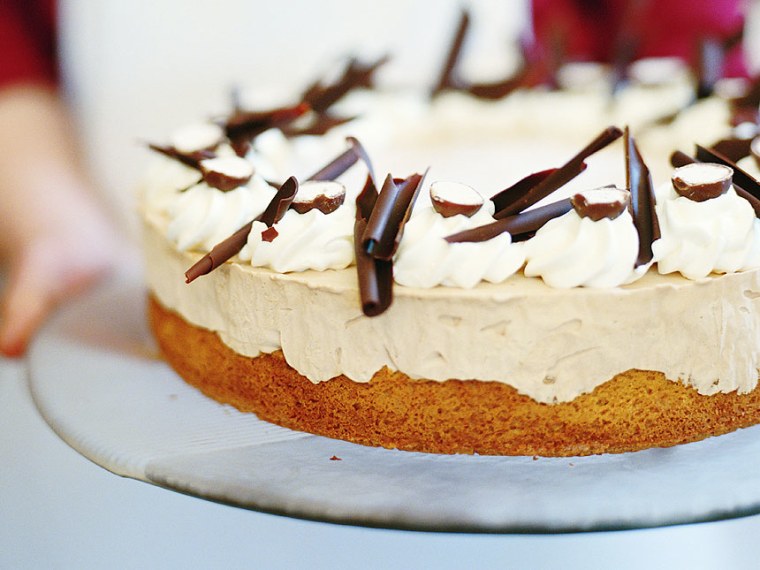There is no right or wrong frosting or glaze for a cake. Use your preference to select something that will complement what you have baked. As a general rule, however, caramel frostings and others that set up firm are best with softer-textured cakes. And it's the dense, oilier cakes that are best with the fluffier icings, like cream cheese or buttercream. You want to also play up corresponding flavors in the cakes and frostings: For example, serve a cinnamon buttercream with a spice cake, or a peppermint buttercream with a chocolate cake.
You need not pull your hair out when frosting a cake. Here are some steps to keeping the process sane.
1. Brush all the crumbs from the sides of the cake layers with a soft pastry brush. You can freeze the cake for 20 minutes to make it easier to frost.
2. Place a dab of frosting or corn syrup in the center of the platter to secure the bottom cake layer to the platter. Choose the thickest layer and place it right side up on the platter.
3. To keep the edges of the serving platter clean, ease 4 strips of waxed paper, about 3 inches wide and a foot long, under the layer so that they form a square. These will catch the run-off frosting.
4. Apply a first thin coat of frosting, 1/2 to 3/4 cup or about 1/4 inch thick, to the first layer. If the top is lopsided, build it up with some of the frosting. Stack the second layer on top of it so that both layers are right side up.
5. Spread a thin layer of frosting on the top of the cake to seal crumbs and repair imperfections; then apply a thin layer around the sides.
6. Apply a second, thicker, more decorative layer of frosting to the top and sides. For smooth sides, hold the spatula tight against the cake with one hand and turn the cake with the other. On the top of the cake, make decorative ridges or swirls with the end of a thin metal spatula.
7. Once the cake is frosted, gently ease the paper strips out from underneath the cake. If you didn't use paper strips, clean up the platter with a wet paper towel.
8. If you frosted with whipped cream or cream cheese and don't want the cake to dry out in the refrigerator, cover the whole cake with a cake dome or with a large inverted saucepan.
9. If you are frosting a cake in the summertime in a hot kitchen, you may want to assemble the cake differently so that it doesn't slide. Place the first layer bottom side up, and frost it; then place the second layer bottom side down on top of it, so the flat surfaces are next to each other. Frost the sides and top as you normally would.
10. If the cake is fragile, and you are worried that the frosting is heavy and will tear the cake, place the layer in the freezer for a few minutes to firm up. And remember that if you dust the cake with confectioners' sugar, do so at the last minute or the sugar will be absorbed into the frosting.
A version of this story originally appeared on iVillage.
